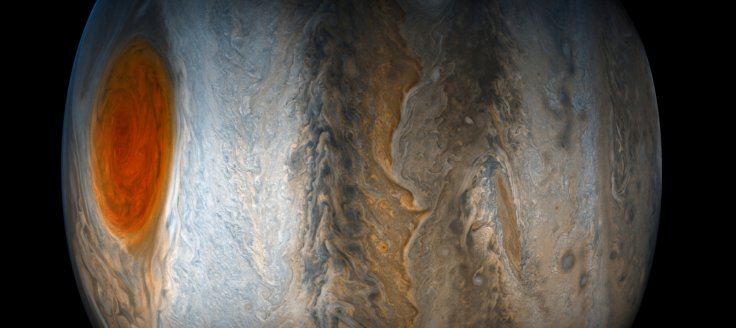
Jupiter's Great Red Spot which has been observed since the 1600s is slowly fading away, and a new study has suggested that this great storm will blow itself out within the next two decades. It was in 1800 that humans first measured this great red spot in Jupiter and at that time, it was four times bigger than the earth.
Later, when the space probe Voyager 2 hurtled past in 1979, the storm was measured twice the size of our planet. But latest analysis has revealed that the storm is now just 30 percent bigger than us which indicates that the space phenomenon will become a 'Great Red Memory' within the next one or two decades.
The latest measurement was done by experts at the NASA's Juno probe. The space agency's $1 billion Juno probe took some spectacular images of the Jupiter storm last year, and these photos clearly revealed that the Great Red Spot is fading away in the course of time.
"In truth, the Great Red Spot has been shrinking for a long time. Now it's something like 13 degrees wide in longitude and only 1.3 times the size of the Earth. Nothing lasts forever. The Great Red Spot will in a decade or two become the Great Red Circle. Maybe sometime after that the Great Red Memory," told Juno mission planetary scientist Glenn Orton to Business Insider.
Juno will approach Jupiter once again in April 2018, and later in July and September 2019. But none of these will be as close and detailed as the July 2017 flyby.
The longest recorded storm on Earth happened in 1991 when Hurricane John lasted 31 days. Unlike Jupiter, our planet does not allow storms to last for hundreds of years. Various factors including the small size, moderate rotation rate and the presence of a dynamic atmosphere shape the jet streams in our world in such a way that dangerous weather systems will get disrupted before things get out of control.









